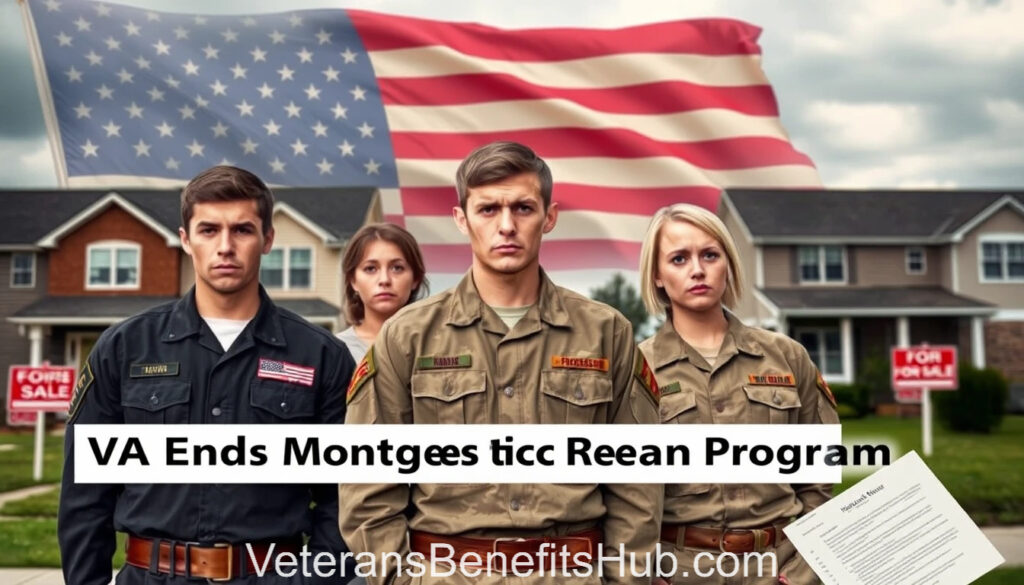VA to Eliminate VASP: What It Means for Thousands of Veterans at Risk of Foreclosure

In a move that’s left veterans groups, housing advocates, and thousands of former service members concerned, the U.S. Department of Veterans Affairs (VA) has announced that it will end the Veteran Affairs Servicing Purchase (VASP) program—a key mortgage relief initiative created in response to its own prior missteps during the COVID-19 pandemic.
For many, this decision is more than a policy shift—it’s a potential turning point that could result in tens of thousands of veterans losing their homes.
What Happened?
Roughly a year and a half ago, during the aftermath of the pandemic, the VA made a sudden and highly criticized decision to end its COVID forbearance relief options, which had allowed veterans to pause their mortgage payments and tack them onto the end of their loan.
The abrupt halt came with no viable alternative, stranding thousands of veterans—many of whom were still recovering financially. Without a clear path to get current on their mortgages, veterans faced foreclosure or were forced to sell their homes.
After significant public pressure and a wave of veteran foreclosures, the VA implemented a stopgap solution: VASP. This program allowed the VA to purchase delinquent loans from mortgage servicers and offer affordable, low-interest payments directly to veterans. With rates as low as 2.5%, it helped more than 17,000 veterans avoid foreclosure.
But now, that lifeline is being pulled.
When Will the Program End?
According to the VA’s recent announcement on April 3, 2025, the VASP program will stop accepting new applications beginning May 1, 2025.
Their reasoning? The VA states it is “not set up or intended to be a mortgage loan restructuring service.” That has left many wondering: What’s next for veterans still at risk?
A History of Missteps
This latest announcement marks yet another chapter in a series of mismanaged efforts by the VA surrounding veteran mortgage relief.
To recap:
-
During COVID, veterans were offered forbearance—an agreement with lenders to skip payments and add them to the end of the loan.
-
In October 2022, the VA abruptly ended the partial claim program, which was the main tool for adding missed payments to the back of the mortgage.
-
This left around 40,000 veterans without an affordable way to catch up, leading to a spike in foreclosures.
-
VASP was created in response, offering relief to some—but not all—veterans in need.
Why Veterans Advocates Are Concerned
While the VA says it needs to step back from managing mortgages directly, no alternative relief program has been announced, and Congress has not passed new legislation to replace VASP.
Veterans groups and housing advocates are urging the VA to restore the partial claim option, which is still available to civilians through FHA, Fannie Mae, and Freddie Mac-backed mortgages. That method allows homeowners to move missed payments to the end of their loan term and resume payments—without the government needing to hold the loan.
Elizabeth B., representing the Mortgage Bankers Association, said it bluntly:
“Cutting the VASP program—especially before the VA stands up an alternative—would have one clear result: foreclosure. Period.”
A Bipartisan Push for a Replacement
Some Republican lawmakers, including Rep. Mike Bost (R-IL) and Rep. Derrick Van Orden (R-WI), have voiced their disapproval of VASP, but support a return to the partial claim system.
They argue it would provide veterans with relief while keeping the loan in the hands of traditional mortgage servicers—limiting government exposure while protecting veterans from losing their homes.
However, the Biden administration has stated that Congress must pass legislation to authorize such changes. Until that happens, the future remains uncertain for those who are still underwater on their loans.
Resources for Veterans in Need
If you or a fellow veteran is navigating this complex housing situation, there are still resources and trusted advisors who can help.
One of them is David Pekich of VA Housing Education—a veteran and long-time advocate for fair housing solutions. Whether you’re trying to refinance, lower your payment, convert your property into an investment, or just need honest guidance, David can provide clarity and options tailored to veterans.
With interest rates showing signs of decline, now may be a smart time to explore refinancing, especially with VASP coming to an end.
Final Thoughts
The VA’s decision to end the VASP program without a clear replacement once again puts thousands of veterans in a precarious position. Many are still dealing with the lingering effects of the pandemic and prior policy reversals.
For generations, the VA home loan program has been a powerful tool for building stability and wealth among those who’ve served. But unless the VA and Congress act swiftly to restore or replace critical relief options, that legacy may be tarnished for many.
💬 What Can You Do?
-
Share this article with a fellow veteran or family member who might be affected.
-
Contact your Congressional representatives to advocate for the reinstatement of partial claim options.
-
Reach out to VA loan experts if you’re unsure about your mortgage options.
⚠️ Disclaimer:
This article is for informational purposes only and does not constitute legal, financial, or housing advice. VeteransBenefitsHub.com is not affiliated with the Department of Veterans Affairs. Veterans experiencing mortgage distress are encouraged to contact the VA directly or speak with a certified housing counselor or VA loan expert.
More Resiurces about this topic: Militarytimes.com
